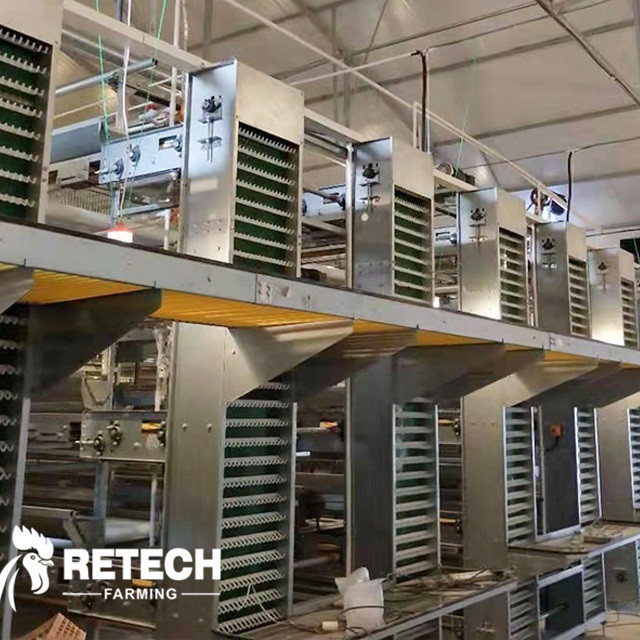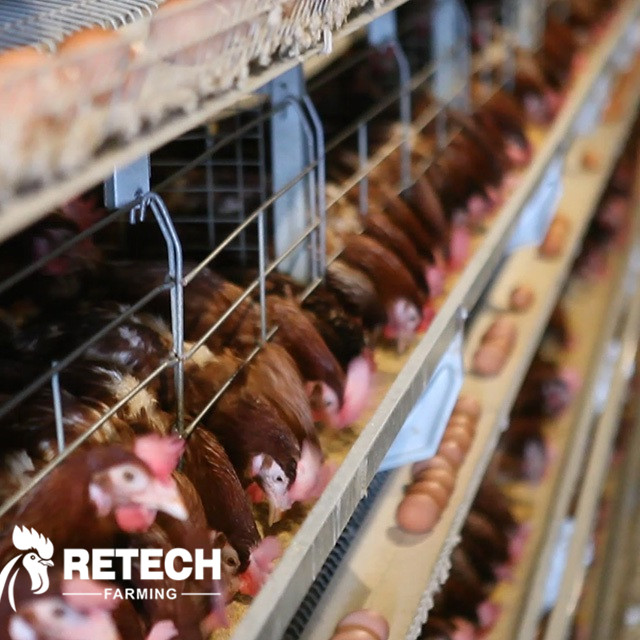1.Adjust the flock in time
Before winter, sick, weak, disabled and non-egg-producing chickens should be picked out and eliminated from the flock in time to reduce feed consumption. After turning on the lights in the winter morning, pay attention to observe the mental state, food intake, drinking water, feces, etc. of the chickens. If the chickens are found to be depressed, loose feathers, green, white or bloody feces, they should be isolated and treated in time. Or eliminate it, listen carefully to the breathing of the chickens after turning off the lights at night. If coughing, snoring, sneezing, etc. are found, the sick chickens should also be isolated or eliminated in time to prevent the expansion of infection and spread.
2.Pay attention to keep warm
The suitable temperature for laying hens is 16~24°C. When the house temperature is lower than 5°C, the egg production rate will decrease. When it is lower than 0°C, the egg production rate will be significantly reduced. If the temperature is too low, the material consumption will increase significantly. The feeding and management of laying hens in winter is mainly based on keeping warm. Before entering winter, repair the doors and windows, block the wind tunnel, and pay special attention to blocking the fecal opening to prevent the formation of low temperature areas locally. A layer of plastic film can be covered outside the chicken house to prevent the invasion of thieves. If necessary, a heating pipe or a heating furnace can be installed to appropriately increase the temperature of the chicken house. In winter, the drinking water temperature of laying hens should not be too low. Drinking low-temperature water can easily cause cold stress and stimulate the gastrointestinal mucosa. Warm water or new deep well water can be selected. Pay attention to use cotton and linen fabric and plastic foam to wrap the water pipe to prevent the water pipe from freezing and cracking.
3.Enhance ventilation
In winter, the main contradiction is the insulation and ventilation of the chicken house. Excessive ventilation is not conducive to the insulation of the chicken farm. Poor ventilation will increase the concentration of toxic and harmful gases such as ammonia, carbon dioxide, and hydrogen sulfide in the chicken house, which will induce respiratory diseases and affect the egg production rate. , shell quality and egg weight. Therefore, it is necessary to carry out regular and appropriate ventilation. The ventilation can be carried out when the temperature is high at noon. The number and duration of fans or windows can be opened according to the density of the flock, the temperature in the house, the weather conditions, and the degree of stimulation of toxic and harmful gases. It was decided that intermittent ventilation can be used for 15 minutes every 2 to 3 hours, so that the harmful gases in the chicken house can be discharged as much as possible, and the air in the chicken house can be kept fresh. In addition, when ventilating, do not let the cold air blow directly to the chicken body, but also prevent robbery. At the same time, it is necessary to clean up the manure in time to avoid the generation of harmful gases.
4.Reasonable control of humidity
The suitable environmental humidity for laying hens is 50-70% and should not exceed 75%. Excessive humidity in the chicken house will not only increase heat dissipation, affect the insulation effect of the chicken house, but also create conditions for the reproduction of bacteria and parasites. Regular maintenance of the drinking water system is necessary to avoid water pipes, drinking fountains or water tanks from leaking and wetting the chicken body and feed, so as to avoid increasing the humidity in the house and the heat dissipation of the chicken body. If the humidity of the chicken house is too low, it is easy to cause respiratory diseases in chickens. Generally, the air is dry in winter, and the humidity can be increased by spraying warm water or disinfectant water in the corridor of the chicken cage.
5.Supplemental light time
Laying hens require up to 16 hours of light per day, and light has the effect of stimulating egg production. In winter, the days are short and the nights are long, and artificial light is needed to meet the light requirements of laying hens. You can choose to turn on the lights in the morning before dawn, turn off the lights after dawn, turn on the lights in the afternoon when there is no sunshine, and turn off the lights at night to ensure 16 hours of light. But to ensure the regularity, that is, turn on and off the light regularly, the light bulb can be equipped according to 2~3W/m2, the height of the light bulb is about 2 meters above the ground, and incandescent light is usually used.
6.Regular cleaning and disinfection
The cold weather in winter makes the resistance of chickens generally weak, which can easily lead to outbreaks of respiratory diseases. Therefore, regular disinfection is necessary. The disinfectant can be selected from drugs with weak irritation and less toxic and side effects, such as Xinjierzide, peracetic acid, sodium hypochlorite, For poisoning, etc., several disinfectants can be used in cross rotation to avoid drug resistance. The disinfection time is best to be carried out in the evening or under dim light. When sterilizing, it is necessary to cover all aspects, so that the medicine falls evenly on the surface of the chicken cage and chicken body in a mist form. The air inlet and the rear of the chicken house should be sterilized. Under normal circumstances, disinfection should be performed once a week.
7.ensure adequate nutrition
In winter, laying hens need to consume more energy to maintain body temperature, and this part of the energy comes from feed. Therefore, it is necessary to appropriately increase the proportion of energy feed oil, corn, broken rice, etc. in the feed formula, and appropriately increase the content of vitamins and minerals to meet the needs of laying hens in winter. In addition, the frequency of feeding can be increased to promote the feeding of laying hens.
Post time: Mar-25-2022










